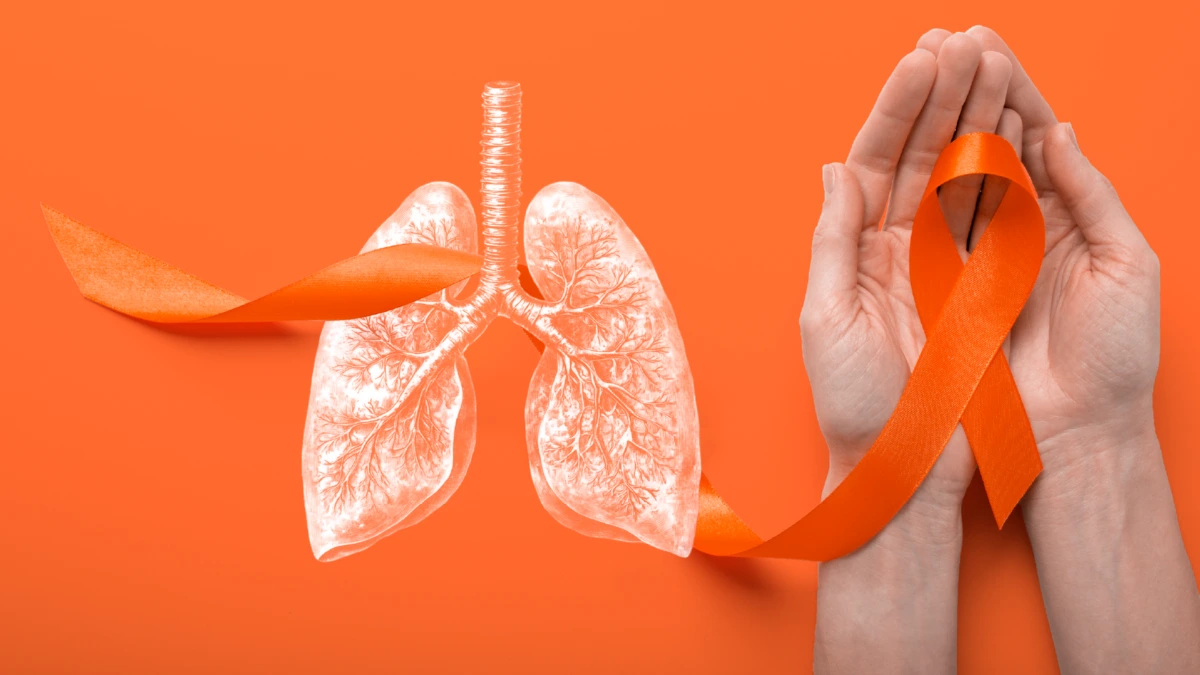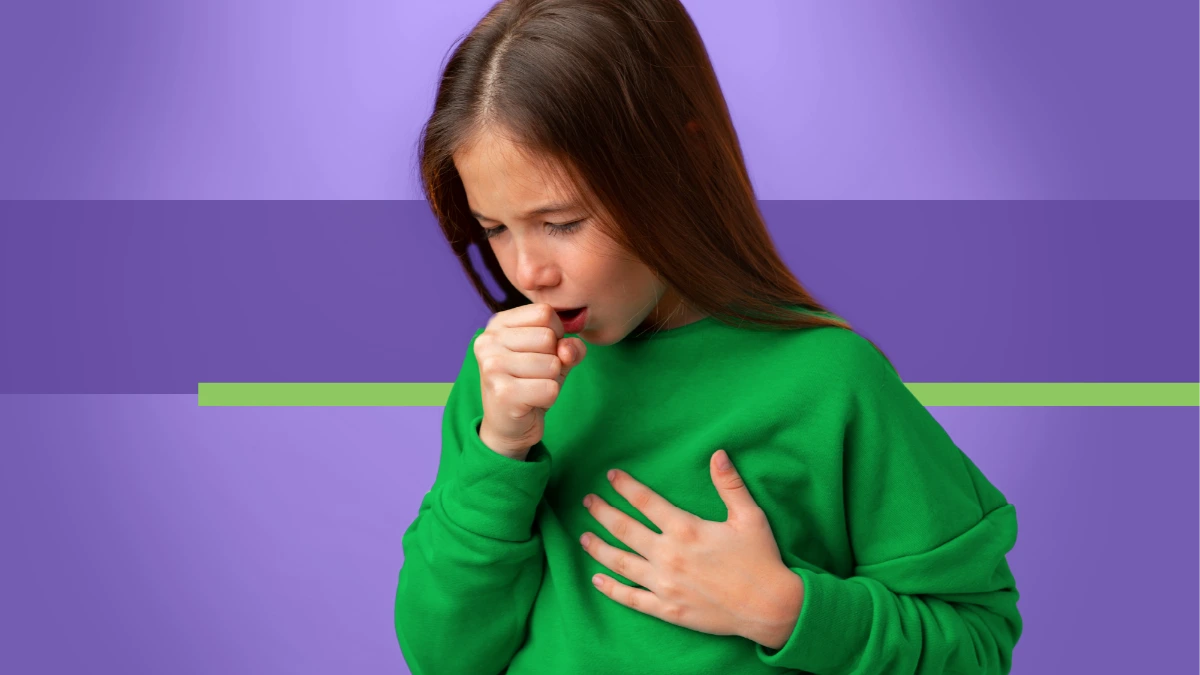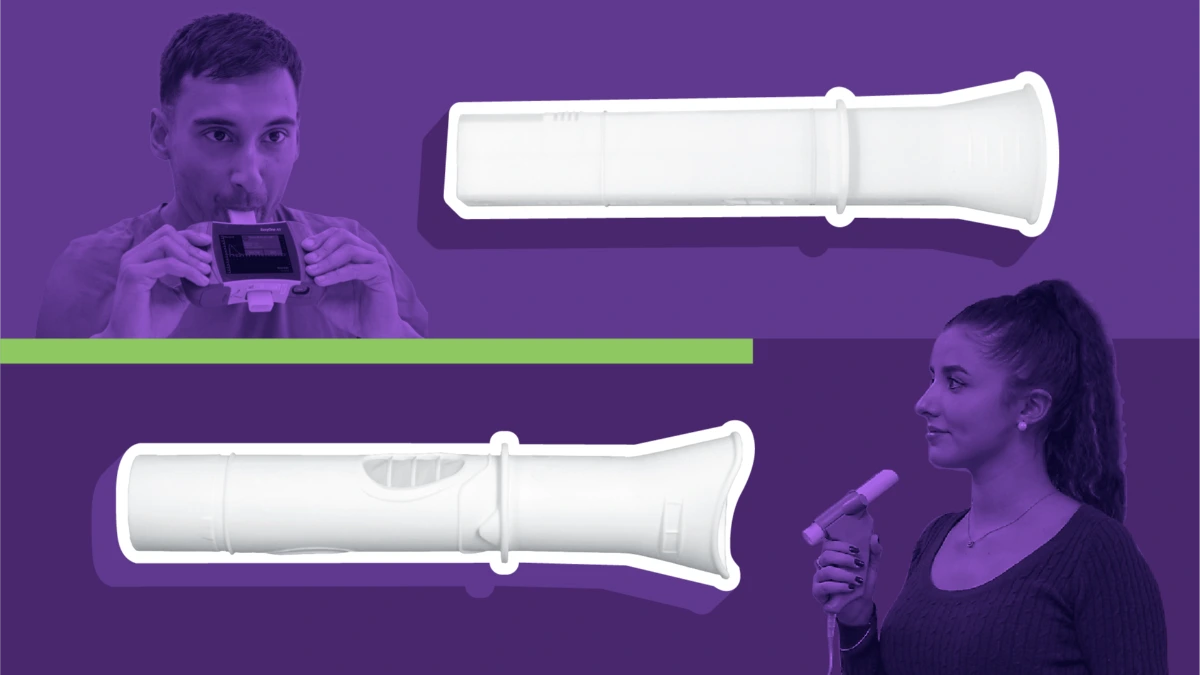Why clean air is essential for people with asthma

Asthma affects more than 260 million people worldwide, and according to the Global Initiative for Asthma (GINA), it is “one of the most common chronic non-communicable diseases.”1 Those living with asthma can experience disruptions in school and work attendance, sleep, exercise, and other daily activities if not correctly managed. If an asthma attack is severe enough, it can even lead to hospitalization or death.1 Air quality is one factor in asthma management that plays a significant role. Poor air quality can harm lung function and contribute to asthma symptoms and exacerbations.2
Understanding asthma, its triggers, and prevalence #
Asthma is a serious, incurable lung disease in which the airways narrow due to inflammation, making breathing more difficult.3 Symptoms, such as coughing, with or without mucus, wheezing, chest tightness, and shortness of breath, and their frequency differs depending on the person and can change over time.3 Many things trigger symptoms, including viral infections, exercise, and pollen.4 Asthma commonly emerges in childhood; however, it also affects adults.4
The good news is that asthma can be diagnosed with spirometry, an easy and affordable lung test. With proper treatment and management, including taking medication, creating an asthma action plan, monitoring the disease over time, and avoiding triggers,4 people living with asthma can live a healthy life.
From North America to Europe and beyond, asthma is globally prevalent. Abuzakouk et al note that asthma prevalence in the United Arab Emirates (UAE) is likely eight to nine percent.5 In the European Union, 8.2 percent of adults and 9.4 percent of children have asthma, according to a 2015 article.6 As for the U.S. population, the Centers for Disease Control and Prevention (CDC) reported in 2021 that 7.7 percent, or over 24 million people (weighted number), currently had asthma.7 A study on asthma prevalence in Africa showed a steady increase over 20 years from an estimated 74.4 million people in 1990 to 119.3 million in 2010.8
How air quality affects asthma management #
It’s easy to take the air we breathe for granted, but we must pay attention to poor air quality as it worsens asthma symptoms. Air pollution, now a global issue largely due to industrialization, consists of harmful particulate matter (PM) and gases in the air.2 PM poses a particular threat, as the smallest size can settle in the lungs and enter the blood.2 One example of PM is traffic-related air pollution known as TRAP.2 Data show TRAP may account for 13 percent of childhood asthma globally.2
In a review of studies between 2010 and 2020, Tiotiu et al point to the many air pollutants that impact asthma.2 For example, when infants and pre-school children are exposed to a parent’s smoking after birth, they can develop a wheeze.2 Studies also showed that nitrogen dioxide (NO2) exposure in gas appliances increased asthma symptoms and exacerbations and harmed lung function.2 During times of high ambient ozone (O3) exposure, some studies showed increased asthma emergency room visits and hospital admissions.2 These are just a few of the many ways air pollution can wreak havoc on those living with asthma.
Common indoor and outdoor air pollutants #
Some air pollutants can be so common to our daily lives that we might not be aware of their adverse health effects. Take air conditioners (ACs), for instance. One study showed that healthy participants exposed to daily AC for over two years exhibited signs of Sick Building Syndrome or SBS.9 Signs included decreased FVC, FEV1, PEFR, and MVV mean values and increased respiratory symptoms, such as sinus congestion, a dry sore throat, and breathing challenges.9 Poor ventilation and air conditioning’s circulation of cold, dry air and contaminants are likely culprits.9 Symptoms often subside when away from work, but SBS does increase work absenteeism.9
Workplace pollutants and a protection plan for workers must also be considered. Veterinarians, hairdressers, bakers, metalworkers, and others are exposed to animal proteins, chemicals, enzymes, metals, or other substances that are harmful when inhaled.10 Occupational asthma causes wheezing, coughing, shortness of breath, and chest tightness among other symptoms that may or may not improve when away from work and can lead to permanent lung changes.10
Common airborne substances such as dust, smoke, mold, and pollen also pollute the air and trigger asthma.11 While there are many types of polluting gases, ozone (O3), nitrogen dioxide (NO2), and sulfur dioxide (SO2) are commonly found in smog and can irritate the lungs, exacerbate existing asthma, and even lead to the development of asthma.12
EasyOne spirometry machines - tailored solutions for every practice.
Explore our spirometry machines
Benefits of clean air for asthma and allergy sufferers #
People with asthma and allergies benefit from clean air. They experience reduced asthma symptoms and frequency of attacks, improved sleep quality and overall well-being, and better lung function and long-term health benefits. A better life for those with asthma means a better life for those around them, easing the burden on caregivers, healthcare providers, and the costs to society as a whole.
Conclusion #
Clean air is essential for those with asthma and allergies as it reduces asthma symptoms and attacks. Spirometry is also critical to asthma diagnosis. Early diagnosis helps manage daily life and prevents asthma from worsening.
May is Asthma and Allergy month, with World Asthma Day on May 6, 2025.1 This year’s theme, “Make Inhaled Treatments Accessible for ALL,” highlights the life-improving and life-saving benefits of inhaled corticosteroid-containing medications.1 These, along with reliever medication, must be accessible to everyone.1 The Global Initiative for Asthma (GINA) asks health care professionals, policy makers, governments, payers, and the pharmaceutical industry to learn about the crucial role of these medications.1 Together, we can increase asthma awareness and education and reduce its global burden.
World Asthma Day 2025 [Internet]. Global initiative for asthma; 2025 Feb 17 [cited 2025 Mar 28]. Available from: https://ginasthma.org/world-asthma-day-2025/ ↩︎ ↩︎ ↩︎ ↩︎ ↩︎ ↩︎
Tiotiu AI, Novakova P, Nedeva D, Chong-Neto HJ, Novakova S, Steiropoulos P, et al. Impact of air pollution on asthma outcomes. International Journal of Environmental Research and Public Health [Internet]. 2020 Aug 27 [cited 2025 Mar 28];17(17):6212. Available from: https://pmc.ncbi.nlm.nih.gov/articles/PMC7503605/. doi:10.3390/ijerph17176212 ↩︎ ↩︎ ↩︎ ↩︎ ↩︎ ↩︎ ↩︎ ↩︎ ↩︎
LMBB: What is Asthma? Fact Sheet [Internet]. National Heart, Lung, and Blood Institute; National Institutes of Health; U.S. Department of Health and Human Services; 2020 Mar [cited 2025 Mar 28]. Available from: https://www.nhlbi.nih.gov/resources/lmbb-what-asthma-fact-sheet ↩︎ ↩︎
What is asthma? [Internet]. National Heart, Lung, and Blood Institute; National Institutes of Health; U.S. Department of Health and Human Services; [Updated 2024 April 17; cited 2025 Mar 28]. Available from: https://www.nhlbi.nih.gov/health/asthma ↩︎ ↩︎ ↩︎
Abuzakouk M, Ghorab OK, Mahboub B, Alzaabi A, Uzbeck MH, Nasir M, et al. Demographic and clinical patterns of severe asthma in the Middle East. Annals of Thoracic Medicine [Internet]. 2021 Apr 17 [cited 2025 Mar 28];16(2):172–7. Available from: https://pmc.ncbi.nlm.nih.gov/articles/PMC8109688/. ↩︎
Selroos O, Kupczyk M, Kuna P, Łacwik P, Bousquet J, Brennan D, et al. National and regional asthma programmes in Europe. European Respiratory Review [Internet]. 2015 [cited 2025 Mar 28];24(137):474–83. Available from: https://publications.ersnet.org/content/errev/24/137/474. doi:10.1183/16000617.00008114 ↩︎
Most recent national asthma data [Internet]. Centers for Disease Control and Prevention; [Reviewed 2023 May 10; cited 2025 March 28]. Available from: https://www.cdc.gov/asthma/most_recent_national_asthma_data.htm ↩︎
Adeloye D, Chan KY, Rudan I, Campbell H. An estimate of asthma prevalence in Africa: A systematic analysis. Croatian Medical Journal [Internet]. 2013 Dec [cited 2025 Mar 28];54(6):519–31. Available from: https://pmc.ncbi.nlm.nih.gov/articles/PMC3893990/.
doi:10.3325/cmj.2013.54.519 ↩︎Ganji V, Kalpana M, Madhusudhan U, John N, Taranikanti M. Impact of air conditioners on sick building syndrome, sickness absenteeism, and lung functions. Indian Journal of Occupational and Environmental Medicine [Internet]. 2023 Mar 31 [cited 2025 Mar 28];27(1):26–30. Available from: https://pmc.ncbi.nlm.nih.gov/articles/PMC10257240/.
doi:10.4103/ijoem.ijoem_23_22 ↩︎ ↩︎ ↩︎ ↩︎Mayo Clinic Staff. Occupational asthma [Internet]. Mayo Clinic; 2024 Feb 27 [cited 2025 Mar 28]. Available from: https://www.mayoclinic.org/diseases-conditions/occupational-asthma/symptoms-causes/syc-20375772 ↩︎ ↩︎
Mayo Clinic Staff. Asthma [Internet]. Mayo Clinic; 2025 Mar 8 [cited 2025 Mar 28]. Available from: https://www.mayoclinic.org/diseases-conditions/asthma/symptoms-causes/syc-20369653 ↩︎
Air Pollution and Asthma [Internet]. Asthma and Allergy Foundation of America; 2024 April [cited 2025 Mar 28]. Available from: https://aafa.org/asthma/asthma-triggers-causes/air-pollution-smog-asthma/ ↩︎
Written by

Kelly Sicard
MA
Kelly M. Sicard is a freelance writer with an M.A. in English & Creative Writing who spent over a decade working for a non-profit lung health organization. She lives in New Hampshire with her husband, daughter, and black labrador and enjoys reading, writing, listening to stories, appreciating nature, and spending time with family.








